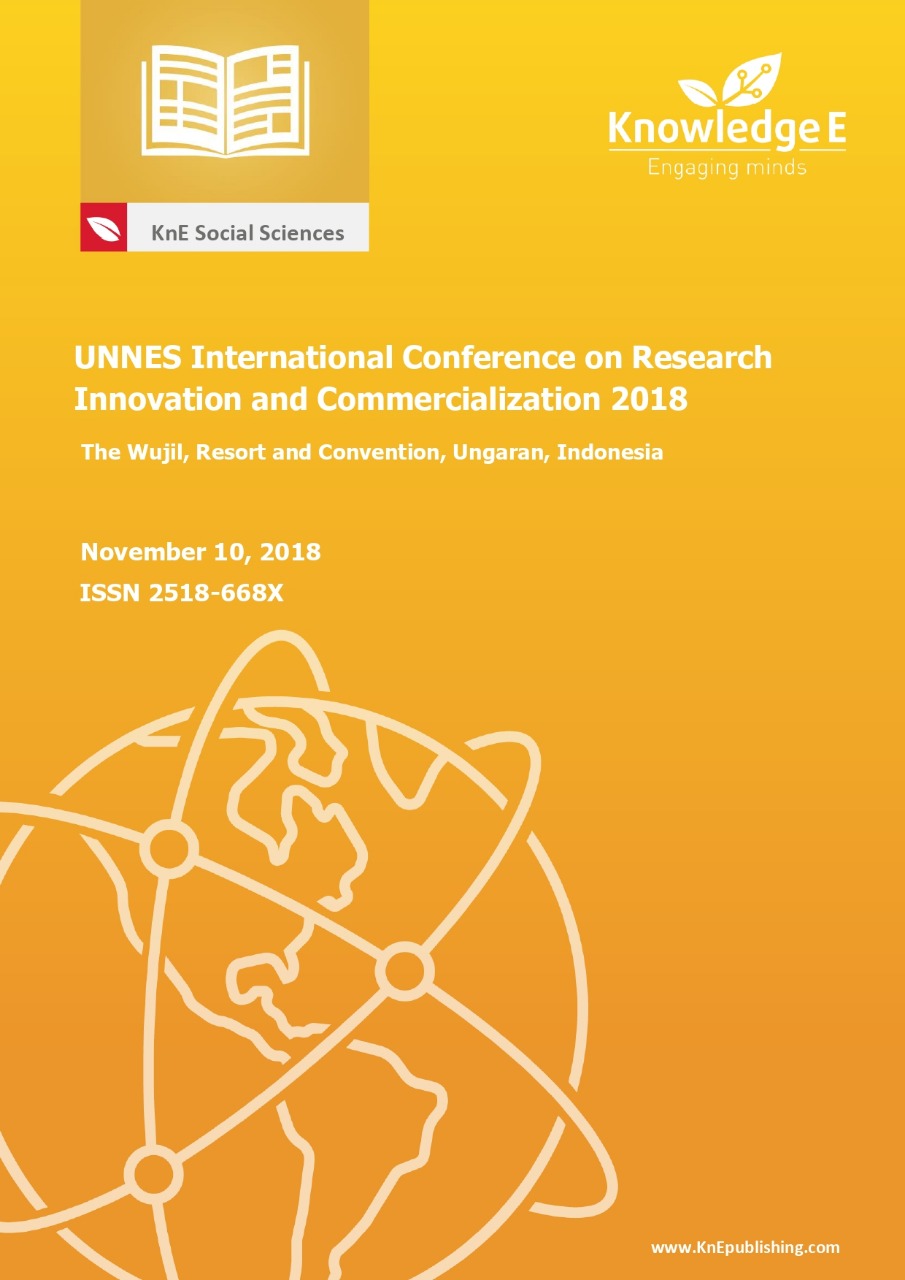GeoGebraAs a Tool to Enhance Student Ability in Calculus
DOI:
https://doi.org/10.18502/kss.v3i18.4714Abstract
ThispaperdescribedtheuseofGeoGebrasoftwaretohelpstudentsinunderstanding Calculus material and its applications. GeoGebra is already used by more than 100 million students around the world. GeoGebra has the ability to minimize the difficulties of students who get Calculus subjects, especially students majoring in Natural Sciences and Engineering because this subject becomes a compulsory subject and a fundamental foundation in mathematics and its application across multidisciplinary fields such as medical, social sciences, psychology, and economics. Usually, the calculus course is given to first-year university students as the foundation for next course requirement. However, the manual calculation in Calculus sometimes takes a long time as it requires mathematics skills to solve the problem. Therefore, the advantagesofusingGeoGebraare(a)helpingtoconveytheCalculusconceptmaterial to be more interesting, especially for the delivery of material concepts of functions, limits, derivatives, and integrals, (b) providing a more realistic image, especially for more complex calculus material, and (c) providing a faster and accurate solution.
Keywords: GeoGebra, Natural Sciences, Engineering, Mathematics, Calculus
References
Aktümen, M. and Yildiz, A. (2016). GeoGebra as an Artist’s Paintbrush. Malaysian Online Journal of Educational Technology. Vol. 4, No 2, pp 17-31. ISSN: EISSN-2289- 2990
Ancsin, G., Hohenwarter, M., and Kovács, Z. (2013). GeoGebra goes Web. The Electronic Journal of Mathematics and Technology, Volume 7, Number 6, ISSN 1933- 2823
Ancsin, G., Hohenwarter, M., and Kovács, Z. (2011). GeoGebra goes Mobile. The Electronic Journal of Mathematics and Technology, Volume 1, Number 1, ISSN 1933- 2823
Binterová, H. and Šulista, M (2013). GeoGebra Software Use within a Content and Language Integrated Learning Environment. European Journal of Contemporary Education. Vol. 4, No 2.
Bulut, M., Akçak
Dimitrov, DM and Slavov, SD. (2018). Application of GeoGebra software into teaching mechanical engineering courses. MATEC Web of Conferences. DOI : doi.org/10.1051/matecconf/201817807008
Drabekova, J. and Švecova, S. (2015). Solving the Microeconomics Problems by Using the Tools of GeoGebra. Proceedings ICABR.
Gluzman, N. A., Sibgatullina, T. V., Galushkin, A. A., and Sharonov, I. A. (2018). Forming the Basics of Future Mathematics Teachers’ Professionalism by Means of Multimedia Technologies. EURASIA J. Math., Sci Tech.;14(5):1621–1633. DOI: https://doi.org/10. 29333/ejmste/85034
Hohenwarter, M. et al. (2008). Teaching and learning calculus with free dynamic mathematics software GeoGebra. ICME 11, Monterrey, Mexico.
Hohenwarter, M. (2013). GeoGebra 4.4–From desktops to tablets. Indagatio Didactica. Vol. 5(1). ISSN: 1647-3582
Hohenwarter, M., and Preiner, J. (2007). Creating Mathlets with Open Source Tools. The Journal of Online Mathematics and Its Applications. Volume 7. July 2007. Article ID 1574
Hussin, S., & Yusoff, J. M. (2018).The Effectiveness of Using GeoGebra Software in Teaching Angle in Circle. International Journal of Computer and Information Technology (ISSN: 2279 – 0764), Volume 07 – Issue 05.
Jacinto, H., & Carreira (2017). Mathematical Problem Solving with Technology: the Techno-Mathematical Fluency of a Student-with-GeoGebra. Volume 15, Issue 6, pp 1115–1136
Khalil, M., Sultana, N., and Khalil, U. (2017). Exploration of Mathematical Thinking and its Development through Geogebra. JOURNAL OF EDUCATIONAL RESEARCH (Vol. 20 No. 1) 2017 Department of Education IUB, Pakistan.
Nobre, C. N. et al. (2016). The Use of Geogebra Software as a Calculus Teaching and Learning Tool. Informatics in Education, Vilnius University, Vol. 15, No. 2, 253–267. DOI: 10.15388/infedu.2016.13
Patten, M. L., and Newhart, M. (2018). Understanding Research Methods: An Overview of the Essentials. Taylor & Francis.
Pyzdrowski, L. J., Sun, Y., Curtis., Miller, D., Winn, G., and Hensel, R. A. M. (2013). Readiness and attitudes as indicators for success in college calculus. International Journal of Science and Mathematics Education 11: 529 – 554.
Solvang, L., & Haglund, J. 2018. GeoGebra in physics education. 10th International Conference on Education and New Learning Technologies, Palma, Spain. 2-4 July, 2018. DOI: 10.21125/edulearn.2018
Thomas, A. and Edson, A. J. (2018). Integrating Mathematics Teaching with Digital Resources: Where to Begin? Proceedings of the 5
Verhoef, N.C, Coenders, F., Pieters, J. M., Smaalen, D. V., & Tall, D. O. (2015). Professional development through lesson study: teaching the derivative using GeoGebra. Journal Professional Development in Education. Volume 41 – Issue 1. DOI : https://doi.org/10.1080/19415257.2014.886285
Walliman, N. (2011). Research Methods : The Basics. Taylor & Francis.
Zakaria, E., and Salleh, T. S. (2015). Using Technology in Learning Integral Calculus. Mediterranean Journal of Social Sciences. MCSER Publishing, Rome-Italy. Vol 6 No 5. DOI:10.5901/mjss.2015.v6n5s1p144

